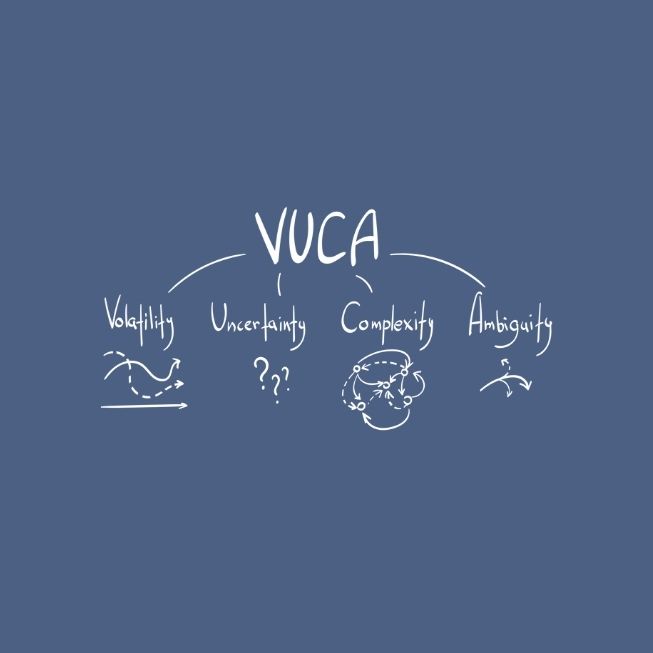In a Volatile, Uncertain, Complex, and Ambiguous world—commonly known as VUCA—there are different types of companies and crises. A company’s approach to handling a crisis depends on its approach because there are only two types of companies: those that have already experienced a crisis and those that will.
Listeria outbreaks, IBEX companies affected by leaks from Commissioner Villarejo’s circle, cyberattacks on Everis and the Cadena SER—week after week, crises like these highlight enormous challenges. In a liquid, digitalized, hyperconnected, and hypervulnerable society, controlling information is a key challenge for those managing crises. When an emergency strikes, chaos ensues. Order is disrupted, uncertainty prevails, and urgency takes over. Restoring order in chaos is the fundamental and necessary goal in a VUCA scenario.
Before the advent of social media, controlling information was already complex, with traditional media closely monitoring any relevant change that could generate noise. Twitter, Facebook, YouTube, Periscope, and smartphones have multiplied these risks. Social media has given all stakeholders a voice, transforming them into prosumers—especially employees, one of the biggest risk vectors.
We live in a VUCA world. In this new landscape, any small incident within an organization can quickly escalate into a crisis broadcast in real-time before alarms even sound. Understanding the types of companies in crisis and the kinds of crises they may face is crucial.
Table of Contents
Types of Crises
At Señor Lobo & Friends, we categorize crises into two types:
HARD
- Highly focused on prevention. These companies have embedded a culture of crisis prevention within their organization. They have identified risks, implemented early warning systems, and established crisis management teams.
- Adaptable to change. Although their crisis management procedures account for most incidents, their teams can quickly adapt to the unexpected, as no two crises are identical.
- Resilience. When faced with business or reputational damage, they quickly absorb the blow and shift into recovery mode.
- Digitally awareness. They recognize that we live in an interconnected world where any stakeholder is a potential media source due to mobile technology. Hypertransparency has forced them to rethink corporate governance policies.
WEAK
- Lack of preventive structure. Either they have never considered crisis prevention or assume that crises won’t affect them. Many invest heavily in marketing but neglect reputation risk management.
- No crisis procedures or trained spokespersons. This puts them in a critical position when a crisis arises. By the time they manage to execute a crisis strategy—if they even do—the damage has already been done.
- Unidentified risks. While they may have perfected ways to maximize profits, they often overlook ethical considerations. In today’s hypertransparent world, malpractice will eventually come to light.
- Low resilience. When crises hit, they have little chance of neutralizing them in time. The damage to reputation and business is often devastating, sometimes leading to the company’s downfall—just ask Magrudis.
This starting point is crucial in handling a real crisis. Given today’s digital, hyper transparent, and real-time information-sharing landscape, organizations that fail to uphold corporate governance standards—especially WEAK companies—are highly vulnerable.
Adding to this, the rise of digital activism has placed new ethical demands on corporate agendas. Many companies are forced to redefine their values and restructure their risk prevention strategies. Otherwise, they risk facing what we at Señor Lobo & Friends call HIGH-IMPACT crises rather than LOW-IMPACT crises. The former, like Magrudis’ case, can swiftly destroy a company’s reputation and business.
HIGH-IMPACT Crises
- Rapid spread in a digital environment.
- Often triggered by close stakeholders, including employees.
- Severe impact on stock value (for public companies) and reputation, leaving a long-lasting negative digital footprint.
- High attention from social media and traditional media.
LOW-IMPACT Crises
- Latent internal issues that remain unresolved or poorly addressed. They may escalate into HARD crises under certain conditions.
- Often originate within the organization. At this stage, the company can still take corrective action.
- Minimal reputational damage and no impact on stock value. The digital footprint remains unaffected.
- Low attention from social media and traditional media.
Timely Crisis Response is Possible
In today’s hyperconnected, hypertransparent, and hypervulnerable VUCA world, many organizations realize the need to update their risk management procedures to handle real-time crisis broadcasts—especially when customers or citizens are affected. Often, the first sign of an issue is a complaint shared on social media.
Many companies are becoming aware of the need to enhance their monitoring and response systems to react swiftly. However, most internal alert systems remain outdated and inefficient. By the time an incident is assessed and an alert is issued, hours may have passed. What could have been resolved quietly on social media often escalates into a full-blown crisis, making headlines in the mainstream media.
Updating crisis management manuals to address digital risks is common, but when implementation begins, companies often realize their internal alert systems either don’t exist or rely on outdated methods—phone calls, emails, or WhatsApp messages. Worse, they lack the proper sensors to detect threats and transmit them to evaluation teams swiftly and securely. This is a hallmark of a WEAK organization.
The Need to Invest in Early Warning Systems
It does not make sense anymore to invest in crisis management procedures, spokesperson training, and simulations while neglecting something as fundamental as rapid threat detection. Early risk detection is where reputational damage and financial impact can truly be minimized.
Any investment in this initial phase is far more cost-effective than spending on damage control later. Real-time crisis management hinges on early threat detection, rapid communication, and swift evaluation—critical elements of a HARD company. Without them, any organization or brand will be overwhelmed by crises and left at the mercy of events.
The Choice is Yours
Responsible companies must recognize the paradigm shift in crisis communication. Updating management procedures is important, but improving detection and alert systems is even more critical. Lacking these systems in today’s digital landscape is, at best, reckless. Fortunately, implementing a powerful digital early warning system is relatively straightforward if you have the right approach.
The question is, when faced with HIGH-IMPACT crises (which are becoming increasingly common), do you want your company to be HARD or WEAK? The choice is yours. The VUCA world is not going away.


